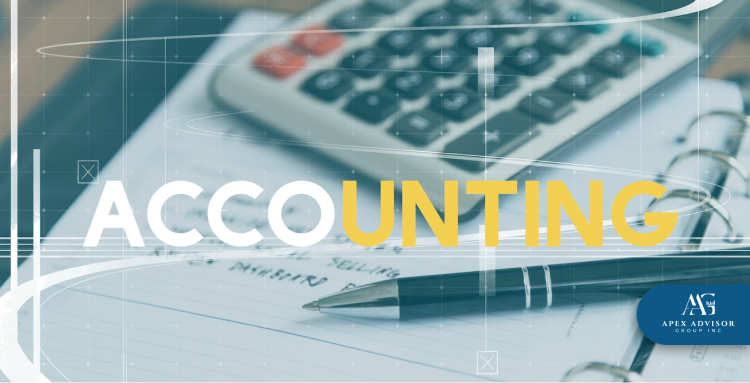How to Handle Accounts Receivable Write-Offs on Your Taxes

October 20, 2024
Ever had a friend who promises to pay you back a loan but never does? It's kind of like when a customer owes your business money and just...doesn't pay. That's called an accounts receivable write-off. It's like a debt that's gone bad, and it can be a real bummer for your business.
But here's the twist: it can also be a tax break! Yep, you read that right. In some cases, writing off a bad debt can help your business save on taxes. So, it's important to understand how to handle these write-offs without getting into tax trouble.
Why Do Write-offs Happen ?
Okay, so you know what an accounts receivable write-off is, right? It's when a business basically gives up on getting back money that a customer owes. But why does this happen?
Well, it's like when you lend your friend money and they keep making excuses about why they can't pay you back. Maybe they lost their job, or their car broke down, or they just forgot. Whatever the reason, after a while, you realize they're probably not going to pay you back.
In business, it's the same thing. Customers might owe money because they went bankrupt, moved away without leaving a forwarding address, or just plain don't want to pay. When a business tries everything they can to collect the debt but still can't, they might write it off.

Tax Implications of Write-Offs
So, you might be thinking, "If I write off a bad debt, does that mean I don't have to pay taxes on the money I never got?" Well, not exactly. But the good news is writing off a bad debt can actually help you save money on taxes.
Think of it like this: When you make money, you have to pay taxes on it. But if you have expenses, you can deduct them from your income, which means you'll pay less in taxes. Writing off a bad debt is basically like deducting an expense.
However, there are some rules and regulations you need to follow. For example, imagine you run a small bakery. You sell a cake to a customer who promises to pay next week. A month goes by, and they still haven't paid. You call them, text them, and even send them a friendly reminder letter, but they still don't pay up. Before you can write off the debt, you need to prove that you tried your best to get your money back.
This might mean keeping records of your phone calls, texts, and letters, as well as any other attempts to collect the payment. And depending on how your business is set up, there might be other things you need to do.
Best Ways to Handle AR Write-Offs on Taxes
Just like flailing your arms and legs in water won't save you if you can't swim, taking haphazard steps won’t help you avoid issues with Accounts Receivable (AR). In fact, it can make things even more complicated. So, let’s take a look at some well-thought-out steps to tackle these problems effectively.

(1) Method of Accounting
There are two main ways businesses keep track of their income and expenses: the accrual method and the cash method.
Accrual Method:
This is like a diary where you write down everything you earn and spend, even if you don't actually get or pay the money right away. For example, if you sell a cake on credit, you'd record the income even though the customer hasn't paid yet. If you buy supplies on credit, you'd record the expense even though you haven't paid the bill yet.
Cash Method:
This is like a piggy bank where you only count the money you actually have. You record income when you get paid and expenses when you pay a bill. So, if you sell a cake on credit, you wouldn't record the income until the customer pays. And if you buy supplies on credit, you wouldn't record the expense until you pay the bill.
The best option ?
The method you use can affect how you handle bad debt write-offs. If you're using the accrual method, you might need to set aside some money in a reserve to cover potential bad debts. If you're using the cash method, you can usually write off bad debts in the year they become uncollectible.
(2) Documentation
When you write off a bad debt, you'll need to provide proof that you tried your best to collect the money. This is called documentation.
Evidence of Collection Efforts: This could include:
Copies of letters you sent to the customer
Records of phone calls you made
Emails or text messages you sent
Any legal actions you took, such as filing a lawsuit
Reason for Write-Off: You'll also need to explain why you think the debt is uncollectible. This could be because:
The customer declared bankruptcy
The customer has moved and left no forwarding address
The customer has passed away
You've been unable to contact the customer despite repeated attempts
Having this documentation will help you support your claim for a tax deduction.

(3) Timeliness
Generally, you need to write off a bad debt within a reasonable time after it becomes clear that the debt is uncollectible. This means you can't wait years before writing off a debt. If you do, the IRS might not allow you to claim the deduction.
The exact timeframe can vary depending on the circumstances, but it's usually a matter of months or a few years. If you're unsure about the specific time limit, it's a good idea to consult with a tax professional.
(4) Bad Debt Reserve: Accrual Method
The idea behind a bad debt reserve is that it helps you match your expenses with your income. If you expect a certain percentage of your customers to not pay their bills, you can set aside a reserve to cover those losses. This way, you're not showing a profit on your tax return if you actually have losses due to bad debts.
To calculate your bad debt reserve, you'll need to estimate the percentage of your accounts receivable that you expect to become uncollectible. This can be based on your past experience, industry averages, or other factors. Once you've determined the percentage, you can multiply it by your total accounts receivable to get the amount you need to set aside for your reserve.
For example, if you estimate that 2% of your accounts receivable will become uncollectible, and your total accounts receivable is $100,000, you would need to set aside $2,000 for your bad debt reserve.
It's important to note that you can't deduct the entire amount of your bad debt reserve in the year you set it up. Instead, you can deduct the actual bad debts you write off against the reserve. So, if you write off $1,500 in bad debts during the year, you can deduct $1,500 from your reserve. The remaining balance can be carried over to the next year.
[ You May Also Want to Know
2. Can You Write Off Credit Card Debt on Taxes ]

(5) Reporting
Once you've determined the amount of your bad debt write-off, you'll need to report it on your tax return. This is typically done on Schedule D of Form 1040 (or its equivalent for businesses).
On Schedule D, you'll need to provide information about the amount of the write-off, the date the debt becomes uncollectible, and any documentation you have to support your claim.
In addition to Schedule D, you might need to file other forms depending on your specific circumstances. For example, if you're a sole proprietor, you might need to report the write-off on your Schedule C. If you're a corporation, you might need to report it on your Form 1120.
Be Positive…
And remember, patience is a virtue, especially when it comes to dealing with bad debts. It might take some time to collect the money, but don't give up hope. And if things get really tough, don't be afraid to ask for help. A tax professional can guide you through the process and make sure you're doing everything right.
So, next time you're dealing with a customer who's not paying up, don't stress out. Follow the steps we've discussed here. Contact us today to schedule a consultation to help you handle your accounts receivable write-offs efficiently and effectively.
